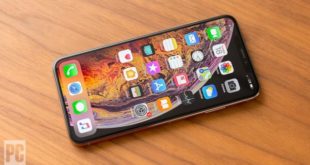
Almost a year ago, rumors spread that Samsung might manufacture OLED screens for the next iPhone. At the time, we examined the rumors and called them plausible, given that OLED technology continues to improve at a reasonable pace, while LCD technology is fairly well-established. Fast forward to the iPhone 7, and Apple clearly chose to stick with LCDs this time around. That doesn’t mean they didn’t break some records — in fact, the LCD screen on the iPhone 7 just might be the best LCD built for any smartphone, ever.
That’s according to Dr. Raymond Soneira of DisplayMate, who put the iPhone 7 through its paces. The device features support for the traditional Rec. 709 gamut used for modern HDTV, as well as the wider DCI-P3 used for digital movie projection. This color standard isn’t as wide as the newer Rec.2020, but it’s 26% larger than the older HDTV standard that most smartphones and tablets use. Dr. Soneira’s tests show the iPhone 7 as having the highest absolute color accuracy, the highest luminance accuracy, the highest contrast ratios, the lowest screen reflectance ever measured, and the smallest color variation with viewing angle, though observed brightness still takes a hefty whack in off-angle viewing (this has always been a weakness of LCD technology).

Best of all, even absolute display power efficiency has gotten somewhat better. Compared with the iPhone 6, the iPhone 7’s maximum display power has only increased by 1%, while its relative power efficiency is 7% better than its predecessor. A 7% improvement in relative power efficiency in a single year, combined with all the other positive changes, is a serious gain for just one year.
The flip side to this, of course, is that Samsung continues to build beautiful OLED displays in its own right, with successive improvements and capabilities. Which one you prefer is more a question of taste, at this point, rather than objective “better-ness.” OLED displays don’t always save power compared with LCDs (it depends on the brightness level of the content). But Samsung uses an oversaturated gamut by default that some people prefer over Apple’s cooler, but more accurate color reproduction. OLEDs still have real advantages over LCDs (thinner displays, higher efficiency in some content, flexible substrates). But Apple is fairly conservative about introducing new features until it’s certain it has them nailed down.
Recent discussions of Apple versus Samsung have revolved around problems involving headphone jacks, Galaxy Note 7 recalls, and Apple’s touch disease. Discussions of actual product improvements have been waylaid by other factors. That’s not a bad thing, if those other factors are the most salient reasons to purchase or not purchase a given device, but it obscured some of the real improvements Apple made this time around. Then again, relentlessly chasing perfect tends to create intrinsically diminishing marginal returns. Apple has avoided hopping on the pointlessly-high resolution bandwagon. How much better can smartphone displays practically get?
 #Bizwhiznetwork.com Innovation ΛI |Technology News
#Bizwhiznetwork.com Innovation ΛI |Technology News



